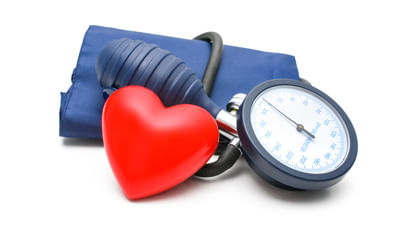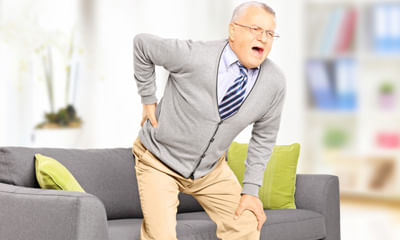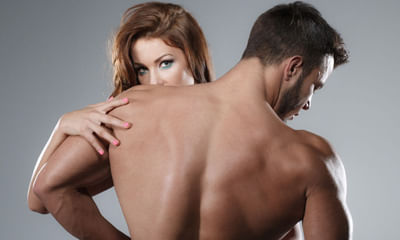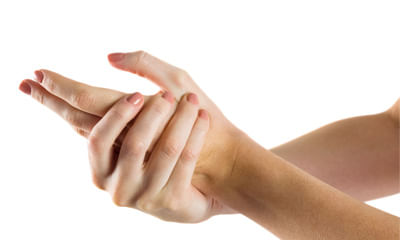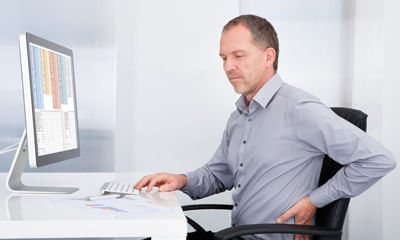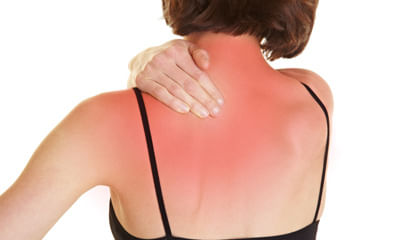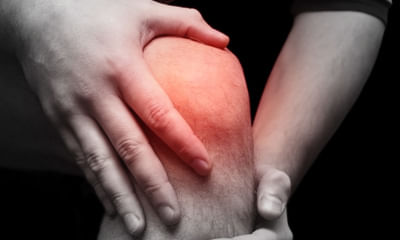How To Reduce Eye Pressure
Good afternoon doctor's respected doctor's with reference of this I want to ask you that muje 4-5 months se motion krte ...
Ask Free Question
Hi, lybrate user, •It indicates piles with gastric disorder , you are suffering from, causing by much stening owing to constipatio . •Tk, plenty of water to moisten stool to prevent constipation being the main cause of piles ,avoiding strain. •Use a hot water tub to soak your anus and buttockes in warm water to release pain and pressure on rectum. Personal hygiene be manitained to reduce pain. •Avoid sitting in one posture for a long time. keep on changing your sitting position to ease pain of piles. •Your diet be easily digestible rich in fiber, on time to avoid gastric disorder. Tk, whole grain,barley, oatmeal and brown rice. Fruits :apples, pear ,and bananas and Papaya. Vegetable -green peas, Broccoli, Brussels sprouts. •Tk, homoeopathic medicine: @ Nux vom 200 -6 pills, at bed time. •Avoid, zinger, irritant intake, alcohol & nicotine. Tk care.
I have feeling imbalance and feel like my feet floating for the last 15 days. I have checked with doctor and my blood pr ...
Ask Free Question
Hi, lybrate user, •Tke, plenty of water to hydrate your body in order to regulate your metabolism, preventing constipation to combat your problem. •Go for meditation to reduce your stress to nourish your body and brain to ease BP level. •Go for a walk in the morning to regulate blood flow to your body and mind to check blood pressure. •Ensure , sound sleep for 6 hours in the night. Tke , homoeopathic medicine, underlying : @Rauwolfia Q -5 drops , thrice with 1tsfl. of water , orally, daily. •Avoid , junk food, alcohol and nicotine. •Tke, care.
I am 23 years old l. I have lower back pain from 1 year. And recently my shoulders are uneven from 2 months. I go to gym ...
Ask Free Question
Sit on an upright bench, like one you'd use for a shoulder press. Holding a dumbbell in your right hand, place your left hand under your left butt cheek and grab the side of the seat. Let your right hand hang down straight by your side and pull your shoulder blades back and together. Now raise your right shoulder up towards your ear-raise it straight up instead of rolling yourshoulder. Hold for a beat at the top, and then return to the start position. Complete a set of 10, and repeat on the other side. Knee pain. If you are overweight, losing weight will also help to reduce pressure on your knee.•mobility exercises rest. Avoid doing things that require you to bend at the hip or put a lot of pressure on the hip. Avoid sleeping on the side of your hip that is painful and sitting for long periods of time •cold and heat. Treating pain with heat and cold may help. Wrap an ice pack or a bag of frozen vegetables in a towel to ice your hip. A warm bath or shower may also help reduce your pain and prepare your muscles for stretching. •stretch. Gently stretching your body may reduce hip pain, especially if the cause is a strain or pinched nerve.
I am 19 years old female I have been crying a lot recently both due to academics and my mother's rude behaviour. I don't ...
Ask Free Question
Hi, I'm truly sorry to hear about the challenges you're facing, and I want you to know that you're not alone. Your feelings are valid, and it's essential to address them with care and understanding. Firstly, please know that there is hope and support available to you. It's understandable that the pressure of academics, combined with your mother's behaviour, is taking a toll on your mental health. Feeling lonely and overwhelmed is incredibly tough, but there are steps we can take together to help you through this difficult time. It's essential to prioritize your well-being and seek help when needed. I strongly encourage you to reach out to a trusted adult or a mental health professional who can provide you with the support and guidance you need. Additionally, there are free and confidential suicide hotlines available where trained professionals can offer immediate assistance and support. These hotlines are safe and accessible, and you can speak openly about your struggles without any cost. In the meantime, here are a few suggestions that may help: Find Support: While you may feel isolated, know that there are people who care about you and want to help. Consider reaching out to a teacher, counsellor, or family member who can offer support and guidance. Self-Care: Take some time each day to focus on self-care activities that bring you comfort and relaxation. This could include practising mindfulness. Set Boundaries: It's essential to establish boundaries with your mother and communicate your feelings openly and assertively. You deserve to be treated with respect and kindness, and it's okay to advocate for your needs. (Setting boundaries with your mother and openly communicating your feelings can be challenging, especially when you're already dealing with a lot of emotions. Seeking support from a professional counsellor or therapist can provide you with effective strategies for navigating these difficult conversations and advocating for your needs.) Manage Exam Stress: While preparing for your NEET exam is important, try not to put too much pressure on yourself. Break your study sessions into manageable chunks, and take regular breaks to rest and recharge. Remember to prioritize self-care during this time and seek support if you feel overwhelmed. here are five additional effective tips for managing exam stress: 1. Practice Mindfulness: Incorporate mindfulness techniques into your daily routine to help calm your mind and reduce stress. Take a few minutes each day to focus on your breathing or engage in guided meditation exercises. 2. Create a Study Schedule: Establish a realistic study schedule that allows you to cover all the necessary material without feeling overwhelmed. Break your study sessions into smaller, manageable tasks and allocate specific times for studying each subject. 3. Stay Active: Engage in regular physical activity to help reduce stress and improve your overall well-being. Whether it's going for a walk, practicing yoga, or participating in your favorite sport, find activities that you enjoy and make time for them regularly. 4. Get Plenty of Sleep: Prioritize getting enough sleep each night, as adequate rest is crucial for cognitive function and academic performance. Aim for seven to nine hours of quality sleep per night and establish a relaxing bedtime routine to promote better sleep habits. 5. Stay Organized: Keep your study materials, notes, and exam schedule well-organized to minimize unnecessary stress and confusion. Use tools such as planners, calendars, and digital apps to stay on top of deadlines and commitments, and create a conducive study environment that fosters focus and concentration. Seek Professional Help: Consider seeking therapy or counselling to explore your feelings in a safe and supportive environment. A trained professional can help you develop coping strategies and navigate your challenges effectively. Remember, you are not alone, and there is hope for a brighter tomorrow. Please reach out if you need further support or assistance. Your well-being is my top priority, and I'm here to help you through this difficult time. Lastly, it's important to recognize that you may not be able to implement all of these suggestions at once, and that's okay. Trust yourself to make the choices that feel right for you in this moment. You are strong and brave, and you have the power to overcome these challenges.
I was not suffering from premature ejaculation but because of masturbation I am suffering from it …i am ejaculating very ...
Ask Free Question
There are several strategies you can try to help prolong the duration. 1. Practice edging: edging is a technique where you bring yourself close to the point of ejaculation and then pause or reduce stimulation before continuing. By repeatedly practicing this technique, you can train your body to delay ejaculation and increase your control over the timing. 2. Try the stop-start method: this method involves stimulating yourself until you feel close to ejaculation, then stopping all stimulation until the urge to ejaculate subsides. Once the urge has decreased, you can resume stimulation and repeat the process. Over time, this technique can help improve your ability to delay ejaculation. 3. Experiment with different techniques: explore different masturbation techniques and find what works best for you. Some individuals find that varying the speed, pressure, or grip during masturbation can help delay ejaculation. Experimenting with different techniques may help you discover what works for you in terms of prolonging the duration. 4. Focus on relaxation techniques: anxiety and stress can contribute to premature ejaculation. Engaging in relaxation techniques such as deep breathing exercises, meditation, or yoga may help reduce anxiety and promote a more relaxed state during masturbation. If premature ejaculation continues to be a concern despite trying various self-help techniques, it may be beneficial to consult me directly to evaluate your condition through physical examination and provide you with personalised advice and treatment.
Dear sir/madam am talking amisulpride 200 (0-0-1) and zeedon 2 mg (risperidone) 0-0-1 for more than 6 years. There has b ...
Ask Free Question
The dose should be gradually reduced and not abruptly, you can discuss with your doctor and try the same, definetly. Good luck
I am 50 year old woman I have a heel pain can you please suggest me a well medicine for this doctor. Thank you. ...
Ask Free Question
Here are some non-medication treatments commonly recommended for heel pain: rest: avoid activities that aggravate the pain and give your heels time to rest and heal. Ice: apply ice packs to the affected area for about 15-20 minutes several times a day to reduce inflammation and relieve pain. Stretching exercises: perform gentle stretching exercises for the calf muscles and plantar fascia to improve flexibility and reduce tension in the heel area. Footwear: wear supportive shoes with good arch support and cushioning to reduce strain on the heels. Avoid flat shoes or high heels that may exacerbate heel pain. Orthotic inserts: consider using orthotic inserts or heel cups to provide additional support and cushioning for your heels. Night splints: use night splints while sleeping to keep the foot in a neutral position and stretch the plantar fascia and achilles tendon. Physical therapy: a physical therapist can provide specialized exercises and treatments to alleviate heel pain and improve foot mechanics. Weight management: maintain a healthy weight to reduce pressure on the heels and minimize strain on the feet. Avoid barefoot walking: avoid walking barefoot, especially on hard surfaces, to prevent further irritation to the heels. If conservative treatments do not provide relief, your healthcare provider may recommend other interventions such as corticosteroid injections, shockwave therapy, or surgery in severe cases.
I have been suffering from disc herniation for the last 5 weeks. Pain is less than before. Rarely pain is observed in le ...
Ask Free Question
Poor sitting posture is a common cause of sciatica. To assist the support of your lower back many simple and effective products have been developed over time. These include: lumbar d-roll bassett frame kinesiology lumbar tape please ask your physiotherapist for their advice in what will help you most. This simple stretch helps relieve sciatica pain by loosening your gluteal and piriformis muscles, which can become inflamed and press against the sciatic nerve. 1.Lie on your back with your legs extended and your feet flexed upward. 2.Bend your right leg and clasp your hands around the knee. 3.Gently pull your right leg ac 4.Ross your body toward your left shoulder. Hold it there for 30 seconds. Remember to pull your knee only as far as it will comfortably go. You should feel a relieving stretch in your muscle, not pain. 5.Push your knee so your leg returns to its starting position. 6.Repeat for a total of 3 reps, and then switch legs. 5.sitting spinal stretch sciatica pain is triggered when vertebrae in the spine compress. This stretch helps create space in the spine to relieve pressure on the sciatic nerve. 1.Sit on the ground with your legs extended straight out with your feet flexed upward. 2.Bend your right knee and place your foot flat on the floor on the outside of your opposite knee. 3.Place your left elbow on the outside of your right knee to help you gently turn your body toward the right. 4.Hold for 30 seconds and repeat three times, then switch sides. 6. Standing hamstring stretch this stretch can help ease pain and tightness in the hamstring caused by sciatica. 1.Place your right foot on an elevated surface at or below your hip level. This could be a chair, ottoman, or step on a staircase. Flex your foot so your toes and leg are straight. If your knee tends to hyperextend, keep a slight bend in it. 2.Bend your body forward slightly toward your foot. The further you go, the deeper the stretch. Do not push so far that you feel pain. 3.Release the hip of your raised leg downward as opposed to lifting it up. If you need help easing your hip down, loop a yoga strap or long exercise band over your right thigh and under your left foot. 4.Hold for at least 30 seconds, and then repeat on the other sideif you have low back pain and sciatica you can undergo intermittent pelvic traction where in your half of your body weight will be added in the electronic traction so that that would help you to reduce the pain, along with interferential therapy stimulations which would help you to get relieved from the radiating pain. Apply ice for the pain to get subsided immediately. If you cannot go immediately for the physiotherapy treatment. Ice can be kept in the low back where you have back pain. It is suggestible to wear lumbo sacral belt which would help you to build the abdominal muscle tone which itself would make you feel better. You can also wear mcr chappals which would help you to have less weight falling in the painful back. U have to take vitamin d rich foods. Likemilk,cheese, yogurt,brocoli, spinach.u need calcium consumption for increase the bone density. Lackof bone and bones crush inside the body this might be due to low calcium or vitamin d which has more impact on the bone density and also it makes one to feel that there is lack of bone strength or in a way the bones are brittle and almost breaking and they feel it is crushed in a way there are many bones breaking at the same time. You have to take vitamin d rich foods. Likemilk,cheese, yogurt, brocoli, spinach.u need calcium consumption for increase the bone density. vitamin d intake via supplements or exposure to low levels of sunlight. Vitamin d is used to absorb calcium in the bone and regulate calcium in the blood. If you have leg pain then you have to rule out the causes for having leg pain. First of all check your weight and your haemoglobin levels, as anaemia always leads to the symptoms of being tired and also having leg pain though there are no issues with the knee joint or back pain. If not if the pain radiates down the back of thigh and legs then it might be due to sciatica. Kindly consult the nearby physiotherapist. Hope you recover soon from the leg pain. Lumbar radiculopathy: pain in lower back or glutei region with sharp shooting pain radiating from hip to leg/foot region, occurs in cases of lumbar radiculopathy or sciatica. This is due to compression of lumbar nerve root or sciatic nerve by disc prolapse, facet joint, trauma, hypertrophied ligamentumflavum, piriformis syndrome, etc. L5 vertrbrae and patient has pain the legs and sensation is disturbed? That is called as lumbar vertebrae. And there are 5 lumbar vertebrae and the 5th lumbar vertebrae is always is located in the lower end where the body weight is taken and it is generally fused with sacral vertebrae. That is where the sciatic nerve passes by and the nerve gets compressed that's the reason you have pain and sensation is disturbed. Loss of concavity of l4-l5 vertebrae. It is other wise called as the lumbo sacral curve which is very important for the spine to take the entire weight evenly if not it leads to disturbance of the disc and also the vertebrae which makes the spine to loose its concavity that's why it is called as loss of posterior concavity. For which we need to improve the spine posture and we need to adapt good posture during our day to day life activities. I have pain in my left side leg. This should be due to the sciatic nerve compression in the right side probably close to your l5 vertebrae. It can also be due to the strain on the left leg, try wearing mcr chappals which would help you to get relieved from pain. We suggest you to wear a lumbo sacral corset and also modified foot wear if you want we can send you by courier.
I am 50 years .since from 2 months I am suffering from stabbing pain near the heel. Pain is very worse in the morning I ...
Ask Free Question
It sounds like you may be experiencing a condition called plantar fasciitis, which is characterized by stabbing pain near the heel, especially in the morning or after periods of rest. Plantar fasciitis is a common cause of heel pain in adults, particularly those who are middle-aged or older. Here are some non-prescription treatment options that may help relieve your heel pain: over-the-counter pain relievers: nonsteroidal anti-inflammatory drugs (nsaids) such as ibuprofen (advil, motrin) or naproxen (aleve) can help reduce inflammation and alleviate pain. However, it's important to follow the recommended dosage and consult with a healthcare professional if you have any underlying medical conditions or are taking other medications. Footwear: wear supportive shoes with good arch support and cushioning to reduce strain on the heels. Avoid walking barefoot or wearing unsupportive footwear, especially on hard surfaces. Stretching exercises: perform gentle stretching exercises for the calf muscles and plantar fascia to improve flexibility and reduce tension in the heel area. Examples include calf stretches, towel stretches, and plantar fascia stretches. Ice therapy: apply ice packs to the affected heel for about 15-20 minutes several times a day to reduce inflammation and relieve pain. Orthotic inserts: consider using orthotic inserts or heel cups to provide additional support and cushioning for your heels. These can help distribute pressure more evenly and reduce strain on the plantar fascia. Night splints: consider using night splints while sleeping to keep the foot in a neutral position and stretch the plantar fascia, which may help alleviate morning heel pain. Physical therapy: a physical therapist can provide specialized exercises and treatments to alleviate heel pain and improve foot mechanics. They may also use techniques such as ultrasound therapy or soft tissue mobilization to reduce inflammation and promote healing.
Hello sir, my mother age 58 years no diabetes, no chronic diseases. Present since she is suffering with both knee pains, ...
Ask Free Question
Ice therapy would definitely help to reduce the inflammation. We also advise you to use knee cap which would help to prevent the knee from damaging further and also to maintain the quadriceps muscle tone. Stiffness might have developed due to weakness of the ligaments &inflammed cartilage. Specific knee exercises will also help ie. Keeping ball underneath the knee and keep pressing it. That's the simple exercise which will help you to strengthen the knee. You need to consume good protein and iron diet in your body which will help you to break the fatigue and general body pain. However non veg foods definitely makes you to get increased with the toxin levels in the body and it makes your knee to have less fluid content in the system. In general we suggest patients who has knee pain to eat more water content vegetables which will definitely help you to feel better. This is a general knee pain and for this you can follow these measures: one keep a pillow right under the knee while sleeping, next is you can keep ice in the painful area for about 5--10 minutes, it looks like you are is important to check that. Anaemia always leads to the symptoms of being tired and also having body pain though there may not be any pathological reasons for knee pain. With knee exercises you will definitely feel better and muscles must be strengthened. •patellar tendinitis: •risk factor •a combination of factors may contribute to the development of patellar tendinitis, including: •physical activity. •running and jumping are most commonly associated with patellar tendinitis. Sudden increases in how hard or how often you engage in the activity also add stress to the tendon, as can changing your running shoes. •tight leg muscles. Tight thigh muscles (quadriceps) and hamstrings, which run up the back of your thighs, can increase strain on your patellar tendon. ••muscular imbalance. •if some muscles in your legs are much stronger than others, the stronger muscles could pull harder on your patellar tendon. This uneven pull could cause tendinitis. •chronic illness. •some illnesses disrupt blood flow to the knee, which weakens the tendon. Examples include kidney failure, autoimmune diseases such as lupus or rheumatoid arthritis and metabolic diseases such as diabetes. •complications •if you try to work through your pain, ignoring your body's warning signs, you could cause increasingly larger tears in the patellar tendon. Knee pain and reduced function can persist if you don't tend to the problem, and you may progress to the more serious patellar tendinopathy. •prevention •to reduce your risk of developing patellar tendinitis, take these steps: •don't play through pain. As soon as you notice exercise-related knee pain, ice the area and rest. Until your knee is pain-free, avoid activities that put stress on your patellar tendon. •strengthen your muscles. Strong thigh muscles are better able to handle the stresses that can cause patellar tendinitis. Eccentric exercises, which involve lowering your leg very slowly after extending your knee, are particularly helpful. •improve your technique. To be sure you're using your body correctly, consider taking lessons or getting professional instructions when starting a new sport or using exercise equipment. •therapy •a variety of physical therapy techniques can help reduce the symptoms associated with patellar tendinitis, including: •patellar tendon strap. A strap that applies pressure to your patellar tendon can help to distribute force away from the tendon and direct it through the strap instead. This may help relieve pain. •iontophoresis. This therapy involves spreading a corticosteroid medicine on your skin and then using a device that delivers a low electrical charge to push the medication through your skin. •platelet-rich plasma injection. This type of injection has been tried in some people with chronic patellar tendon problems. Studies are ongoing. It is hoped the injections might promote new tissue formation and help heal tendon damage. •probably your stamina would've gone down due to over use of the joints and the metabolic activity is more due to running. You need to consume good protein diet so that your body will act as a reservoir. It will help you to fight against rather than affecting one particular area of your body for eg. Knee joint. For knee ligament pain or inflammation you need to keep ice which will help you to prevent the inflammation progressing further. •patellofemoral pain syndrome •usually fully relieved with simple measures or physical therapy. It may recur, however, if you do not make adjustments to your training routine or activity level. It is essential to maintain appropriate conditioning of the muscles around the knee, particularly the quadriceps and the hamstrings. •there are additional steps that you can take to prevent recurrence of patellofemoral •they include: •wearing shoes appropriate to your activities •warming up thoroughly before physical activity •incorporating stretching and flexibility exercises for the quadriceps and hamstrings into your warm-up routine, and stretching after physical activity •increasing training gradually •reducing any activity that has hurt your knees in the past •maintaining a healthy body weight to avoid overstressing your knees ••d cartilageacl •joints, ie. In the upper limbs if the pain is present in the fingers/wrist and in the lower limbs it the pain is present in the toes/ ankle, then we shall definitely say it is rheumatic arthritis. •if your proximal joints (ie. Shoulder, hip & knee has pain) then you can pour hot (warm) water in that area to reduce the inflammation. If you have pain in the distal joints ie. Wrist, fingers, ankle, toes then you can wear either elbow brace or wrist brace which will help you to feel warm and very protective. And also immerse the distal joints in the hot water tub which will help you to reduce the pain. ••knee pain during driving or watching movie. •it might due to lack of movements in the knee while the joints are immobilized during driving and while watching movies. It is important that you need to have movements in and around the knee so that the blood flow will not be disturbed. •knee ligament laxity•if you have problem in your legs then it might be due to ligament laxity where your legs would become very weak due to the old ligament injury and that should be treated immediately. •wear knee cap so that you will feel firm while walking or climbing stairs.•this is a general strain and for this you can follow these measures: one keep a pillow right under the knee while sleeping, next is you can keep ice in the painful area for about 5--10 minutes, if pain still persists you can stretch your body by twisting the waist on both sides how we used to do in the school drill similarly you can try! one time you can do hot water fermentation that would help to reduce the muscle strain.•legs becoming numb and also pain is there when the patient walks for 10-15 minutes?•it looks like you are anaemic. If you feel that the legs are becoming numb then keep your legs warm which is important, probably you can wear mcr chappals inside the house/ socks inside the house. Put a door mat when ever you sit so that you will feel comfortable. Also pour warm water in the legs which would help you to get better circulation. •knee pain. If you are overweight, losing weight will also help to reduce pressure on your knee. •knee pain, when leg folding time get pain. The importance of buying braces and splints from us – orthopaedic support braces we suggest you to wear knee brace which is available at our clinic. If you want you can buy from us, if you are far away from chennai we can send you by courier. The reason why we are conveying you to buy from us is we can demonstrate over the videocall (using whatsapp) and also we can monitor you throughout when to wear it and how long to wear it. And also if you find any difficulty wearing the brace you can also revert back to us for few more suggestions and we can propose you good solution how to go about it. Resisted terminal knee extension: make a loop with a piece of elastic tubing by tying a knot in both ends. Close the knot in a door at knee height. Step into the loop with your injured leg so the tubing is around the back of your knee. Lift the other foot off the ground and hold onto a chair for balance, if needed. Bend the knee with tubing about 45 degrees. Slowly straighten your leg, keeping your thigh muscle tight as you do this. Repeat 15 times. Do 2 sets of 15. If you need an easier way to do this, stand on both legs for better support while you do the exercise. Standing calf stretch: stand facing a wall with your hands on the wall at about eye level. Keep as arthritis is very common that you get generally bilaterally. Ice therapy would definitely help to reduce the inflammation. We also advise you to use knee cap which would help to prevent the knee from damaging further and also to maintain the quadriceps muscle tone 1. Heel and calf stretch 2. Quadriceps stretch to do this stretch: 1. Stand next to a wall or use a chair for support. Your feet should be shoulder-width apart. 2. Bend one knee so your foot goes up toward your glutes. 3. Grab your ankle and gently pull it toward your glutes as far as you can comfortably. 4. Hold for 30 seconds. 5. Return to the starting position and change legs. 6. Repeat 2 times on each side. You need to consume good protein and iron diet in your body which will help you to break the fatigue and body pain. You have to reduce the weight by walking minimum 1 km per day. Slowly reduce the weight and slowly avoid adding salt in the diet which will help you to prevent water retention in the body. Excess salt in general leads to water in the body which might be the reason for you to have leg pain. Hotwater fermentation that would help you to get relieved from joint pains. But food precautions, it is better to avoid tamarind in the food rather to add lime or mango. You can generally do basic aerobic exercises which will definitely help to improve the body weakness. Consume good protein and vitamin diet which will help you to improve your weakness of the whole body. You can give good vitamin d and calcium which will help to have quick healing. If you are a non veg person consume seer fish or if you are a veg person eat mushrooms which has vitamin d3. You need to consume water content vegetables which will make you feel hydrated. A good brace will protect your knee and take the pressure off your meniscus, allowing it to rest. Your doctor may recommend the rice regimen—rest, ice, compression, and elevation—to treat a eroded cartilage which is the main reason for the synovial fluid to get drained. Resting your knee can help relieve your symptoms. Steps to heal a worn out cartilage naturally: rest: it's crucial to rest your knee after it starts to ache. You should not participate in activities where you could cause additional strain. Ice: apply ice to your knee for 15 minutes at four-hour intervals.

